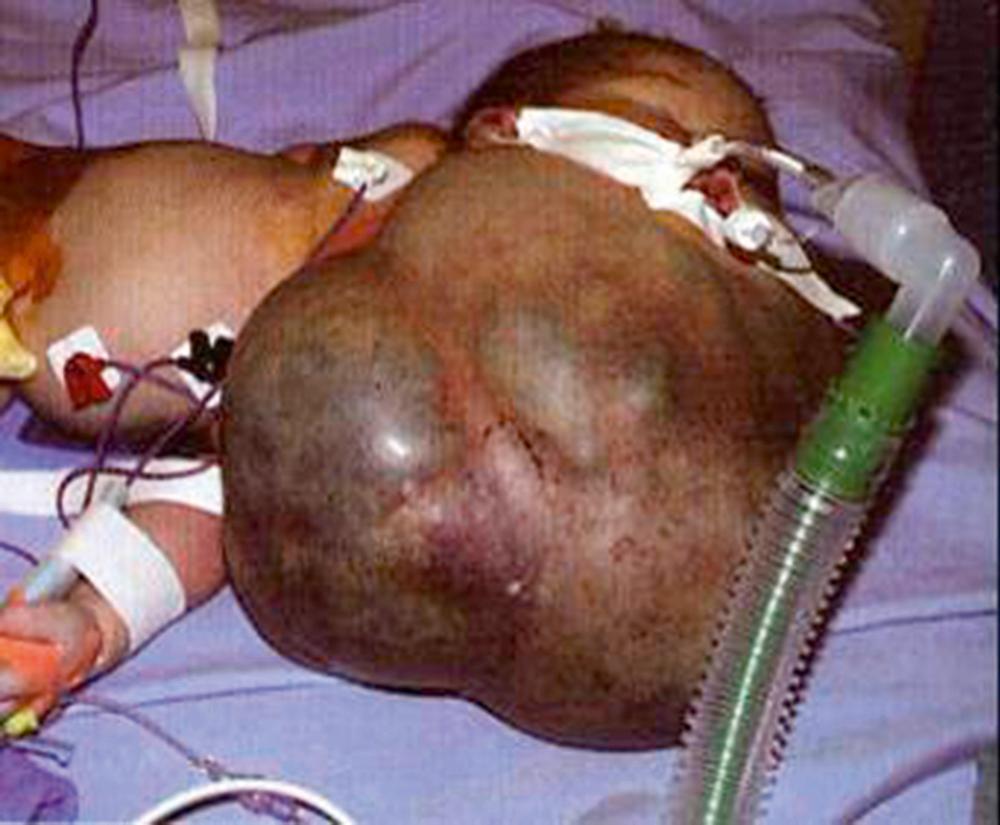Physical Address
304 North Cardinal St.
Dorchester Center, MA 02124
The ex utero intrapartum treatment (EXIT) procedure is a technique for managing fetal airway obstruction at the time of delivery. The key component of the procedure is that a fetal airway is established while maintaining fetal oxygenation with the uteroplacental circulation.
Fetal airway obstruction is typically first identified via an incidental finding on routine prenatal ultrasonography, which then leads to more detailed imaging with fetal magnetic resonance imaging (MRI). Having identified fetal upper airway obstruction in advance, clinicians can plan an EXIT procedure in an attempt to improve fetal outcome. At the time of delivery, maternal-fetal circulation (uteroplacental gas exchange) is maintained while the fetus is partially delivered, allowing time to establish the fetal airway (via orotracheal intubation or tracheostomy), after which the umbilical cord can be clamped. Optimal maintenance of uteroplacental support during delivery requires cesarean section with inhibition of uterine contractility. With traditional cesarean section, removal of the fetus from the uterine cavity leads to uterine contraction followed by placental separation typically within 5 minutes, by which time fetal anoxic brain injury would be expected to occur if the fetal airway had not yet been established. With the EXIT procedure, the uteroplacental circulation can be maintained for approximately 60 minutes after the fetus has been removed from the uterine cavity, allowing more time to establish a fetal airway. A longer duration of uteroplacental support after hysterotomy is achieved via deep maternal general anesthesia, which suppresses uterine contractility. However, suppression of uterine contractility during the EXIT procedure makes maternal blood loss from the hysterotomy a significant concern.
Fetal upper airway obstruction (intrinsic structural obstruction or extrinsic compression from a neck mass) can lead to catastrophic birth.
Fetal upper airway obstruction is typically first identified via an incidental finding on routine prenatal ultrasonography, which then leads to more detailed imaging with fetal MRI.
If fetal upper airway obstruction is identified in advance, an EXIT procedure can be planned to improve fetal outcome.
The key feature of the EXIT procedure is that, at the time of delivery, maternal-fetal circulation (uteroplacental gas exchange) is maintained while the fetus is partially delivered, allowing time to establish the fetal airway (orotracheal intubation or tracheostomy), after which the umbilical cord can be clamped.
Optimal maintenance of uteroplacental support during delivery requires cesarean section with inhibition of uterine contractility.
With traditional cesarean section, removal of the fetus from the uterine cavity leads to uterine contraction, followed by placental separation typically within 5 minutes, by which time fetal anoxic brain injury would be expected to occur if the fetal airway had not yet been established.
With the EXIT procedure, the uteroplacental circulation can be maintained for approximately 60 minutes after the fetus has been removed from the uterine cavity, allowing more time to establish a fetal airway.
A longer duration of uteroplacental support after hysterotomy is achieved via deep maternal general anesthesia, which suppresses uterine contractility.
Suppression of uterine contractility during the EXIT procedure makes maternal blood loss from the hysterotomy a significant concern.
Maternal: Standard anesthetic history
Ask about maternal shortness of breath or light-headedness (could suggest circulatory compromise by the gravid uterus).
Ask about maternal severity of gastroesophageal reflux disease (GERD).
Pregnancy history (gravida and para status, any past or current pregnancy complications)
Fetal: Findings on prenatal imaging
Standard maternal anesthetic physical examination
Estimated fetal weight (based on examination and ultrasound; determines dosage of fetal drugs given during the procedure)
Routine prenatal ultrasound provides first view of fetal neck mass.
Giant neck mass can cause distortion and compression of the larynx and/or trachea.
Fetal lungs produce amniotic fluid; upper airway obstruction preventing egress of this fluid results in pulmonary expansion.
Sonographic findings suggestive of tracheal obstruction/increased intratracheal pressure include bilateral expanded lungs, flattened or everted diaphragm, and dilated airway distal to obstruction.
Subsequent fetal MRI obtained after fetal ultrasound (determines extent of the obstructing mass, airway patency, degree of obstruction, anatomy for determining feasibility of tracheostomy)
Serial MRI to track changes
Assess for hydrops fetalis: Distended respiratory tree directly compresses vena cava leading to ascites, hydrops
Assess for polyhydramnios (results from large neck mass obstructing fetal swallowing, suggests that there is probably tracheal obstruction)
Fetal echocardiography (increased intracardiac pressure from compression from distended respiratory tree)
Estimated fetal weight (based on examination and ultrasound; determines dosage of fetal drugs given during the procedure)
Assess location of placenta (affects patient positioning and cesarean-section incision site).
The need for an EXIT procedure most commonly arises when prenatal imaging demonstrates fetal airway obstruction that would not be compatible with the life of the infant after delivery.
Congenital high airway obstruction syndrome (CHAOS) is an adverse physiologic cascade of events precipitated by complete internal obstruction of the fetal airway (common etiologies include laryngeal web, congenital subglottic stenosis, and laryngeal atresia).
Large congenital neck mass (most common: teratoma and lymphatic malformation; others include neuroblastoma, goiter, and branchial cleft cyst) ( Figs. 197.1 and 197.2 )


Congenital fetal oropharyngeal tumors (such as epignathus) or oromaxillofacial tumors (such as epulis)
Severe fetal micrognathia (such as in Pierre Robin sequence, which can include micrognathia, glossoptosis, airway obstruction, and cleft palate)
Unilateral pulmonary agenesis, severe bilateral pleural effusion
In order to secure the airway and place vascular access in preparation for extracorporeal membrane oxygenation (ECMO) if fetus has severe congenital diaphgragmatic hernia or severe aortic stenosis/hypoplastic left heart syndrome (e.g., EXIT to ECMO)
As a strategy for the resection of a large chest mass compressing the thoracic trachea while the fetus is on placental support
Conjoined twins
Preterm gestational age (this is a relative contraindication; if there is premature rupture of membranes/premature labor, EXIT can be performed, but the ideal time is at term)
Maternal medical comorbidities with increased risk of general anesthesia
Teamwork: A multidisciplinary team is required, including a Pediatric Anesthesiologist, Obstetric Anesthesiologist, high-risk Obstetrician (maternal-fetal medicine specialist), Pediatric Otolaryngologist, Pediatric General Surgeon, Neonatologist, Radiologist, and dedicated operating room (OR) and nursing staff.
Serial team meetings must be held to follow at-risk patients during pregnancy.
It is ideal for the Pediatric Otolaryngologist who is going to be involved with the procedure to meet with the parents before the time of delivery to discuss the procedure, explain the role of the otolaryngologist, and talk about the risks, benefits, and alternatives.
It is important to have a contingency plan for management of the neonatal airway in case the EXIT procedure must be aborted and there is an emergent delivery.
A neonatal resuscitation team is needed to receive the newborn if EXIT is successful.
A second OR team is required if resection of a neck mass/further surgical airway access is anticipated.
Cross-matched blood must be available for the mother and warm type O-negative blood for the fetus.
Become a Clinical Tree membership for Full access and enjoy Unlimited articles
If you are a member. Log in here